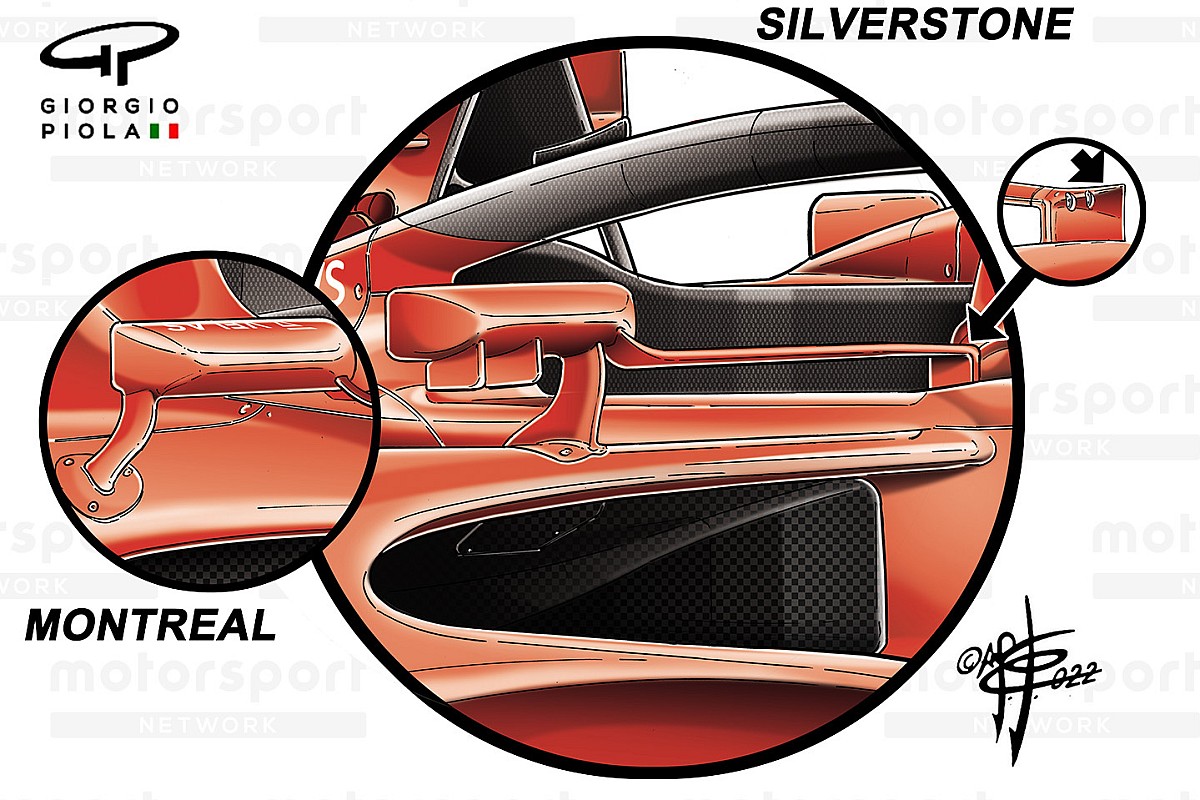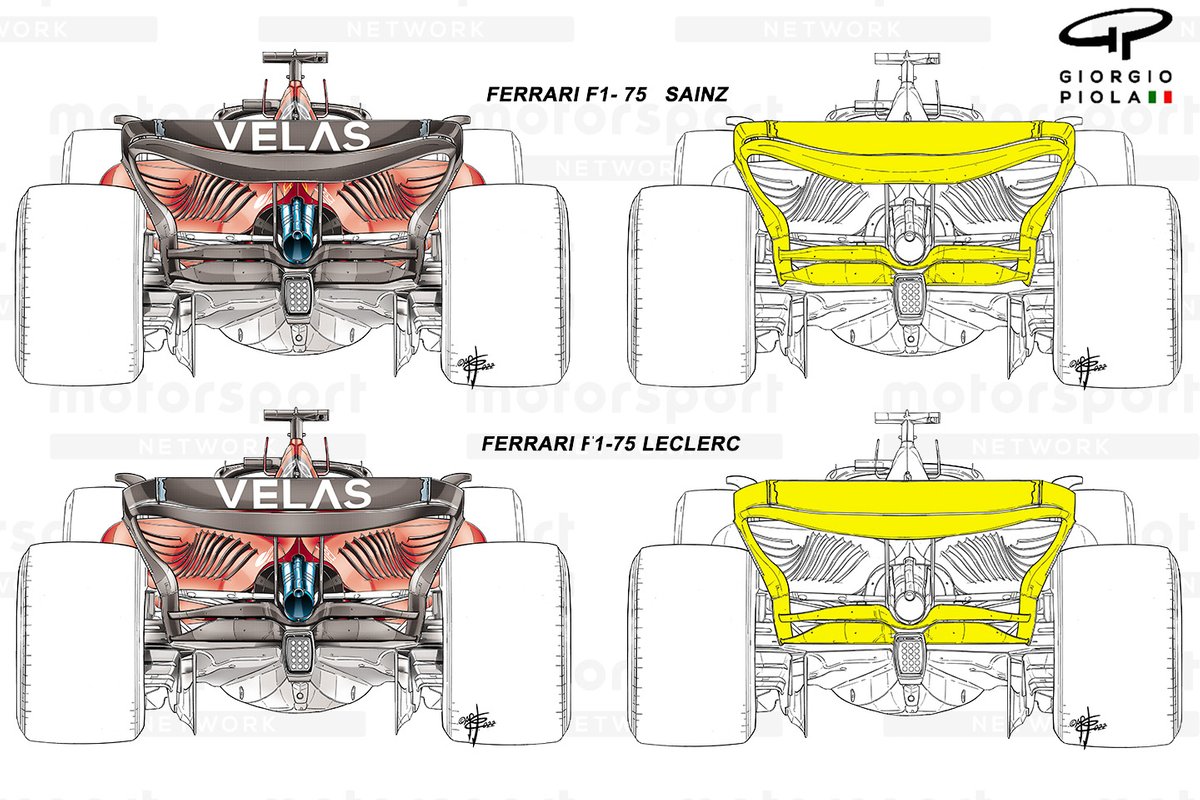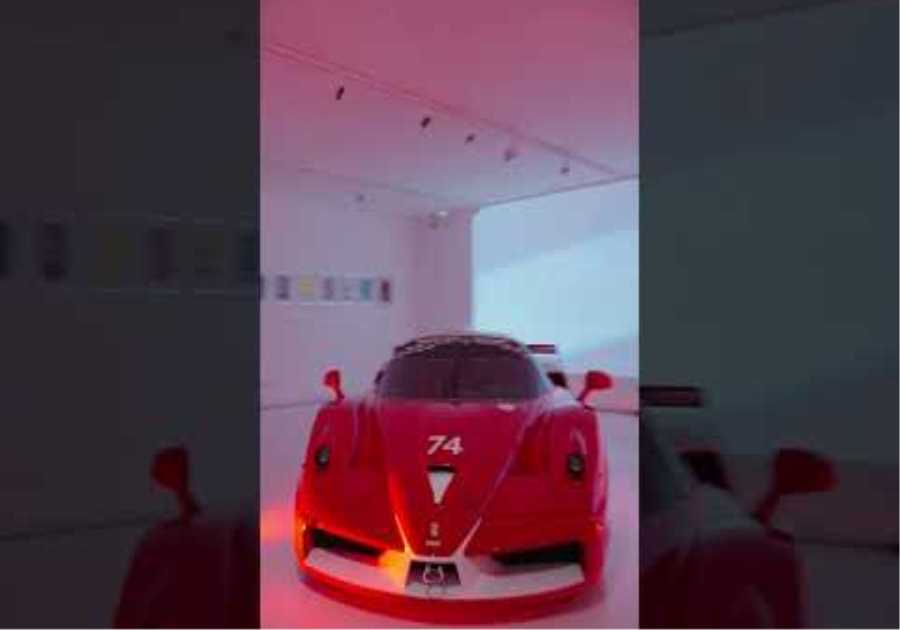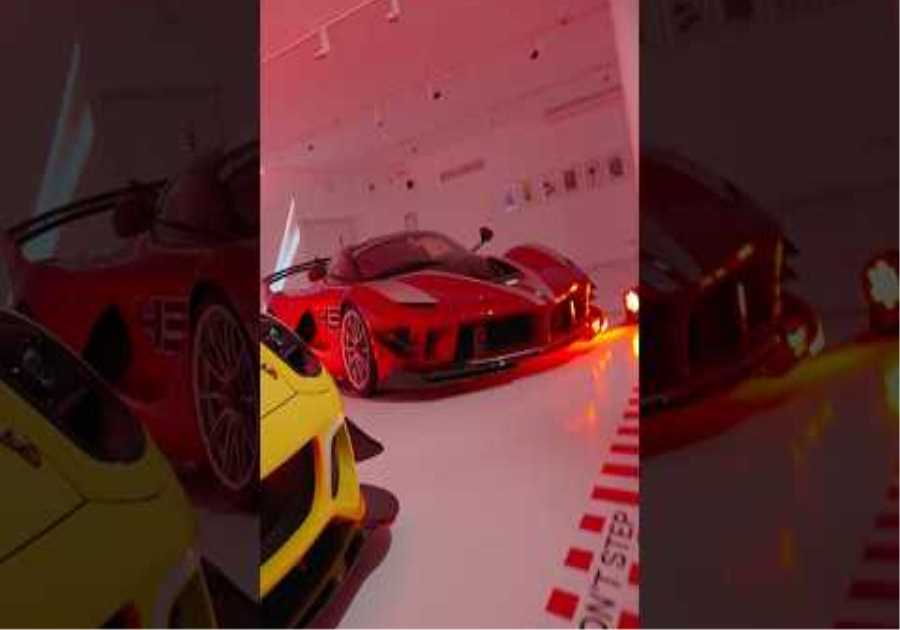
Rather than seeing the need for anything major to be overhauled on the car, it’s clear that the focus is on steady gains – having both taken note of what its rivals have been up to and delivering optimisations on an already race-winning package.
Starting with the mirrors, Ferrari had already made a subtle but meaningful change to the inboard stalk at the Azerbaijan Grand Prix (small inset).
Back then, the sinuous attachment point was exchanged for a buttress-style solution that some of its rivals had either employed since the start of the season or moved to in the time that’s intervened.
It is something that we’ve seen other teams employ already, and makes use of the two surfaces combining to create a shedding surface that will ultimately propagate a vortex.
The design introduced at Silverstone takes this a step further though, as the outboard mirror stalk has been moved further inboard. This gives room for the inclusion of two additional fins to be added to the underside of the mirror housing, both of which will create vortices of their own.
Ferrari F1-75 sidepod undercut comparison
Photo by: Uncredited
The sidepods have also been treated to some alterations, as Ferrari looks to optimize their shape in order to improve efficiency.
As can be seen in the comparison, the new sidepod bodywork has a tighter undercut than it did before, which starts with the bodywork being more tightly shrink-wrapped to the inlet. It then follows a more figure-hugging approach as the bodywork reaches down and around the sidepod’s shoulder.
Ferrari had brought forward one of its developments in Canada to assist Charles Leclerc in his attempts to make his way back through the field after power unit penalties had consigned him to starting at the back of the grid.
To put into context the difference in the wing specifications, Charles Leclerc was 11.4km/h faster than Carlos Sainz in the speed trap and 6.6km/h faster over the finish line.
For Silverstone, both drivers had this new rear wing design at their disposal, which we can see in the comparison of the wings from Canada, below. It is fundamentally a lower downforce configuration, not only by virtue of the upper elements but also the beam wing elements below.
In terms of the main upper wing elements, we can see that the central portion of the wing is depowered by virtue of the mainplane being shallower. This also results in a shallower transition towards the endplates.
However, you will note that the upper flap is deeper on the new specification wing due to that transition and the offset required for DRS, given there can be a gap of up to 85mm when deployed.
The lower of the two beam wing elements has been revised the most in terms of the overall shape, but it is clear to see how the upper element has also been trimmed in the outermost section to help reduce drag.

Ferrari F1-75 rear wing comparison
Photo by: Giorgio Piola






